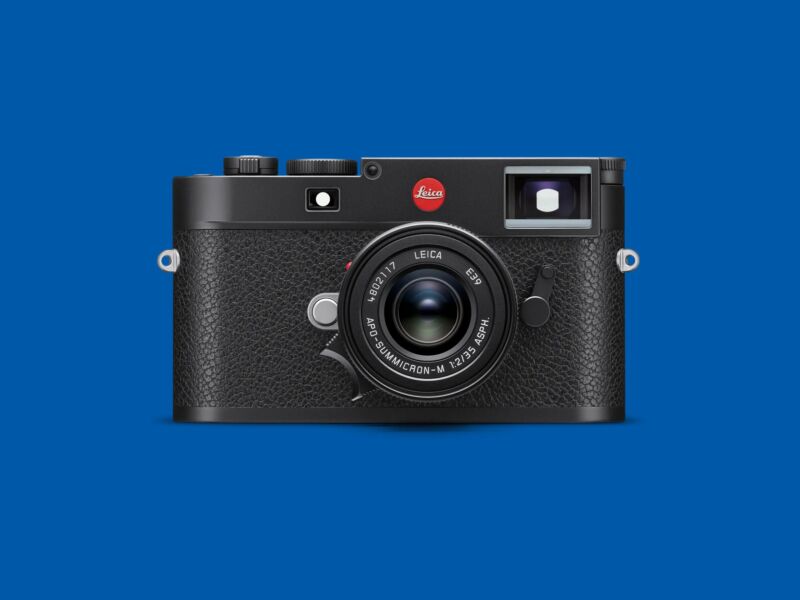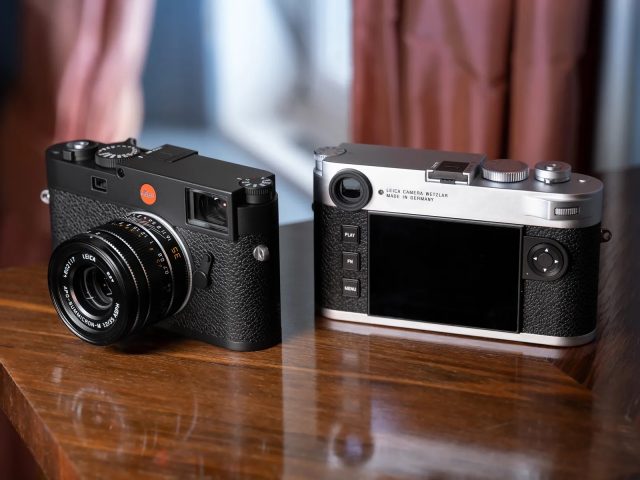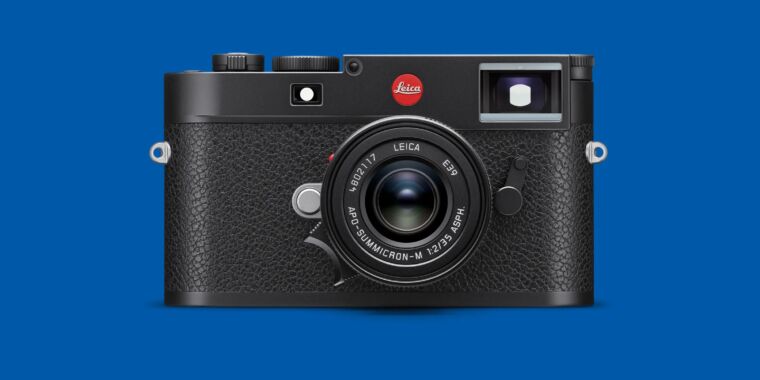
Leica
Leica’s new M11 digital rangefinder camera may as well come from an entirely different era. Don’t get me wrong; the technology inside of it makes it feel plenty modern. The M11 has a high-resolution sensor (a 60-megapixel backside-illuminated full-frame CMOS sensor to be precise), sophisticated metering tools, and even some of the usual digital accoutrements of cameras in our age. But in many ways, it works like the film cameras your parents owned. It thumbs its nose at autofocus, it doesn’t capture video, and it’s perfectly happy to accept lenses that are decades old.
More than that though, the Leica M11 just feels like, well, an old Leica. The new M11 is very much true to the heritage of the M series camera, which launched in the 1950s and went digital in 2006. It’s compact and understated, a box to which you attach a lens.

Leica
The M11 is also true to its legacy when it comes to price, which is high. The retail price of $8,995 is more than most of us are ever going to spend on a camera. And that price is just for the camera body; Leica lenses, which range from $2,500 to $12,000, are sold separately. But even for those of us who cannot afford and will never own a Leica M11, I think this is a device we should notice and talk about. It deserves more discussion than a simple product review.

This is because the M11 shows that the engineers at Leica are trying to keep something alive, something that I think the rest of the camera world has forgotten: that the camera doesn’t matter, but rather the photographs matter. The camera is just a tool, and any tool is only as good as the person using it.
A wrench is just a wrench. Some wrenches may be better than others, but if you want to do anything useful with a wrench, you need a person with the skill to use a wrench. That skill might come in different forms and guises. I know what I’m doing with a socket wrench in an internal combustion engine, but I have no skill at all when using a plumbing wrench on the pipes in the basement.
In much the same way, a camera comes to life when it’s picked up by a person with the skill to use it. Put an outdated digital camera from the early 2000s in Maggie Steber’s hands and odds are you’ll end up with a great image. Put the brand-new Leica M11 in my hands and the odds of getting a great image are less favorable.
Leica loaned me an M11 and I shot with it for one week. The reason I say the Leica M11 feels more like a film Leica than a modern digital camera isn’t because it isn’t capable, but because it has been engineered to be used in conjunction with human skill. Specifically, your skills as a photographer.
Cameras are increasingly designed to remove the human factor from the act of taking a picture. With the addition over the last several decades of features like autofocus, auto white balance adjustment, and auto light metering, the engineering effort of most camera manufacturers has gone into replacing the learned choices of the individual photographer with algorithms. These algorithms turn the act of producing a great image into something that’s no longer a challenge you must rise to or adapt to, but a series of options you can choose between.








